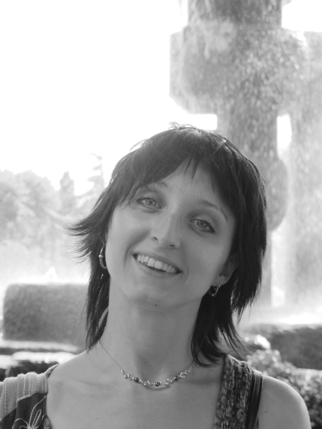The Multidisciplinary Fellow 2019*

Project Proposal: What is it like to be me?
This project lies between contemporary dance and analytic philosophy. It aims to explore the interaction between self-experiencing, self-shaping, and self-communicating, along three main threads: First, only I can know what it’s like to be me. Second, knowing what it’s like to be me shapes who I am. Third, is there any way you can understand what it’s like to be me?
You have to explain what pain feels like to someone who has never had any pain sensation. Hard task, isn’t it? What is there to say about pain except that it’s, well, painful? Yet your interlocutor won’t understand. You had better give up trying to explain it with words: you deal them a good blow, then they’ll know. One can only know what pain feels like if one experiences it firsthand.
This applies to all kinds of experience: tasting sushi, having an orgasm, bungee-jumping; but also having a child, losing a loved one, being raped, being black. If you don’t experience it, you cannot know what it’s like. I cannot explain that to you in words. Only I can know what it’s like to be me.
Change in epistemic standing as the result of having a new experience yields self-transformation, as L.A. Paul has argued. After having a child, or after being raped, you’re no longer the same person and this partly because of what you learn upon having those experiences. Coming to know what it’s like to have a certain experience shapes your self; it defines or redefines who you are.
Could others ever understand what it’s like to be me? If I cannot tell them, how will they know? Even if the epistemic gap cannot be fully filled, perhaps it can be partially filled. Perhaps imagination can help, as Amy Kind suggests. Perhaps art can help. Perhaps dance can help. Let’s give it a chance.
Anna is a contemporary dancer and a philosopher. She did her undergraduate studies in philosophy at the University of Udine, Italy, and her Ph.D. in philosophy at the Institut Jean Nicod/École Normale Supérieure/PSL Research University. She has trained in ballet, modern, jazz, and contemporary dance since the age of four. Although her studies in dance and in philosophy have mostly cohabited in separate rooms, they have always shared a common thread: the metaphysics, epistemology, and existential condition of the self. Her dance solo Mestruativo explores women’s struggle for identity definition between being, appearing, and others’ expectations. Her solo reRality investigates the disintegration of the self in the current social-virtual environment. In philosophy, her research has focused on perception, the unity of consciousness, introspection and self-knowledge. Her Ph.D. dissertation, “Primitive Introspection,” explores the nature and epistemology of a non-conceptual and non-propositional (and thus judgment-free) kind of self-knowledge. Her fourth article, “Introspection without Judgment,” is forthcoming in Erkenntnis.
Project Report: What is it like to be me?
The ambition of this project has been to investigate metaphysical and epistemological questions about the self through the body and movement, and on this basis create a contemporary dance solo. The main issues I have addressed concern selfknowledge, self-expression, self-communication, and self-shaping, as well as the more fundamental question: what is the self (if there is any such thing)? The main challenge has been finding a way to translate those apparently abstract issues into the language of dance. The strategy I have adopted is threefold. First, images: using the shape of my body and blending it with props and objects to form an image and thereby evoke a meaning. Second, movement quality: distilling the essence of a notion or philosophical issue, looking for its simplest form, finding a bridging principle for improvisation and composition, and thereby transforming it in a quality of movement. Third, words: mixing dance with text and voice (either recorded or live).
Differently from my previous choreographic projects, I tried, this time, not to conceive a well-defined outline of the piece from the very beginning—though I also tried not to deprive myself of a rigorous research method. Rather than boxing it in a predefined structure (so hard to dismantle), I left the creation process unfold more freely, by working on different ideas, improvising on various themes, and producing choreographic material without knowing where it would be located in the final piece. This way of working has been a bit dispersive, but quite fecund in the end.
With some of that material I structured a first (20 minute) study of the piece, which I am going to perform in Hangartfest (Pesaro, Italy) on September 5-6, 2020. With the rest of the materials and some further work, I aim at a final full (about 45 minute) version of the piece, to be completed throughout the next months.
The choreographic creation has benefited from the support and generous hospitality of Compagnie Les Pieds Nus (Brest, France), Le Quartz (Brest, France), Espace Vauban (Brest, France), Compagnia Arearea (Udine, Italy).
Throughout the duration of the fellowship, I also worked on two academic articles related to the topic of this project. The first is ‘Introspective Acquaintance: An Integration Account’, about the metaphysics of introspection (under revision in the European Journal of Philosophy). The second is ‘Introspective Knowledge by Acquaintance’, defending the existence of a non-conceptual kind of introspective knowledge (under revision in the American Philosophical Quarterly).
*Funded by the APRA Foundation Berlin.